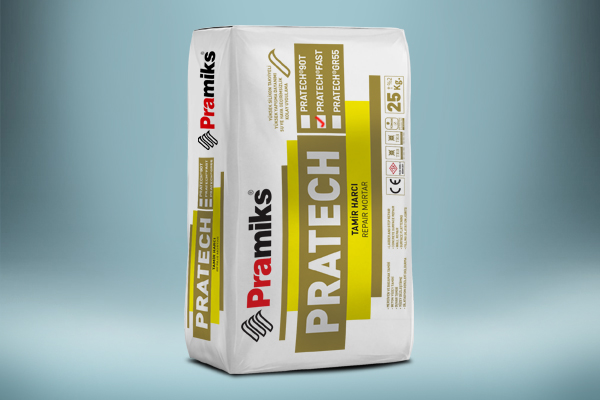Belgelerimiz

PRODUCTS
PRATECH® FAST
1 Hour Repair Mortar Opened to Traffic
It is a cement-based, single-component, polymer-reinforced, non-segregating, flowable, early high-strength, fast-setting repair mortar.
- It has high resistance to freeze-thaw cycles.
- Thanks to its rapid strength development, it is easy and quick to apply, and allows the surface to be opened to traffic in a short time, providing cost advantages.
- It does not segregate or bleed water.
- It has high flowability and high strength.
Details
Details
Technical Specifications
|
|
|
|---|---|
| Mixture Density | 2.2 kg/litre |
| Compressive Strength | Day 1: >18 N/mm² (1 hour) / >33 N/mm² Day 28: >60 N/mm² |
| Bond Strength | For Concrete: >5 N/mm² (Day 28) |
| Time Before Walking On It | 60 minutes (20˚C) |
| Initial Set | 20 minutes (20˚C) |
| Full Curing Time (20˚C) | 28 days |
| Consumption | For 1 mm thickness: 1.71 kg/m² |
| Packaging | 25 Kg Kraft Bag |